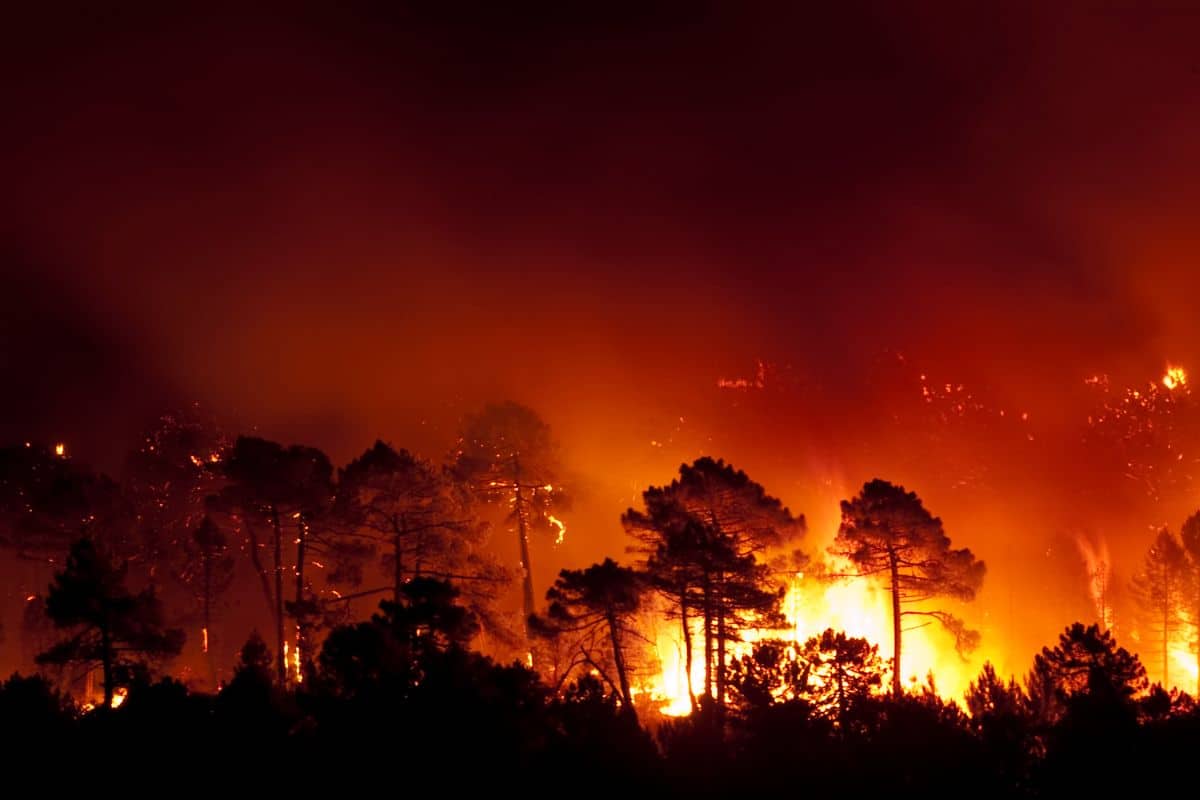
People living in the Mediterranean, in particular, will have to prepare for more severe wildfires in the spring and summer.
In previous years, violent and intense wildfires and forest fires took place relatively far away, such as Australia and the United States. But Europe can no longer escape it either. Scientists have in a new study discovered that global warming will also set our own continent on fire. We’ve been warned.
2021
Last year we noticed that the south of Europe in particular was ravaged by severe forest fires. It was mainly due to extremely high temperatures and exceptional drought. In the Italian port city of Syracuse, located in southeastern Sicily, the mercury even rose to a record-breaking 48.8 degrees Celsius, the highest temperature ever recorded on European territory.
Fires in Europe
In a new study, researchers have mapped the fire risk for several European areas. And the study reveals an unprecedented change on the European continent. For example, it appears that the risk of forest fires has increased sharply, especially in the spring and summer. And although the affected areas are located in southern, central and northern Europe, the Mediterranean region in particular will suffer from more intense fires.

The risk of fire is increasing sharply in Europe. Image: University of Barcelona
The reason is that many areas in southern Europe, including the Mediterranean, face more extreme conditions that can fuel fires. These adverse conditions are becoming more common as a result of increasing heat waves and droughts, as we saw last year.
Carbon sinks
In short, the areas in Europe where the risk of fire is greatest is in Southern Europe. And that has far-reaching consequences. “This is where we find forests and carbon sinks that are essential for climate regulation,” said researcher Jofre Carnicer. “The forests on the European continent absorb about 10 percent of total greenhouse gas emissions per year. In concrete terms, they capture approximately 360 million tons of CO2 annually. That is more than the emissions from Spain, for example, which account for about 214 million tons of CO2.”
Carbon sinks refer to dynamic (permanent or temporary) storage sites of CO2. The stored CO2 then – temporarily or permanently – no longer contributes to climate change. For example, you should think of a growing forest (because it grows, it dynamically captures CO2, in contrast to, for example, a fully-grown forest that is not called a carbon sink, but a carbon reservoir). The largest carbon sink on earth is not forests, but the ocean. Nearly 40 percent of the CO2 released into the atmosphere from the combustion of fossil fuels since the industrial revolution has been absorbed by the ocean.
According to the researchers, European forest fires thus pose a significant threat to these important carbon sinks. And that’s bad news. It means they will no longer be able to absorb enough CO2 and cool the climate. “Regions such as the Pyrenees, the Iberian and Cantabrian Mountains in Spain, the Alps, the Massif Central in France, the Italian Apennines, the Carpathians in Central Europe, the Balkans, the Caucasus and the Pontic Mountains in southeastern Europe are most threatened by fire,” Carnicer lists.
Challenge
The increase in fire risk poses a challenge to the development and implementation of the new European forestry strategy. The goal is that the forestry and agricultural sector will emit around 310 million tons of CO2 less annually by 2030. However, the question is whether this is feasible if the fire risk increases in many areas. “The increase in fire risk can jeopardize rapid decarbonization,” said Carnicer. “Certainly if no effective ways are devised to limit these risks.”
Moreover, the increase in fire risk could in turn accelerate climate change. It is actually a vicious circle, where a changing climate leads to conditions that make fires easier to start and the fires in turn contribute to further climate change. “In this context, drastically reducing our CO2 emissions over the next two decades is essential to reduce fire risk in Europe and worldwide,” the researchers conclude.
…researchers have previously stated that without drastic measures, 74 percent of all land on Earth will fall prey to wildfires? It shows the magnitude of the impact of climate change. Read more here!
Source material:
†Study reveals an unprecedented change in Europe’s fire regime” – University of Barcelona
Image at the top of this article: JAH by Getty Images (via canva.com)